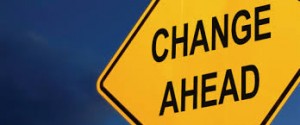 As Melissa and I reflect upon this trend in education we believe improvement in Taholah will come with implementation of a standard based system of teaching and learning. The goal would be to focus on growth and what student’s CAN do….not encompass an entire scope of learning within one grade. If we don’t address and celebrate those milestones, students and teachers won’t find success. We both get frustrated with the misconceptions that surround CCSS, testing, curriculum, and instruction. In our eyes, those obviously intertwine, however they are not one in the same. I have a few thoughts after reflecting on my experiences, researching, observing, and engaging in #SBLchat on twitter.
As Melissa and I reflect upon this trend in education we believe improvement in Taholah will come with implementation of a standard based system of teaching and learning. The goal would be to focus on growth and what student’s CAN do….not encompass an entire scope of learning within one grade. If we don’t address and celebrate those milestones, students and teachers won’t find success. We both get frustrated with the misconceptions that surround CCSS, testing, curriculum, and instruction. In our eyes, those obviously intertwine, however they are not one in the same. I have a few thoughts after reflecting on my experiences, researching, observing, and engaging in #SBLchat on twitter.
- Developing a standards-based report card is primarily a challenge in effective communication with teachers and parents. Notice, students were not mentioned: they actually understand the idea without bias from previous school experiences and can see the purpose more than adults.
- Accurate interpretation is the key element in effective communication. We need to know exactly what #SBL is and what it is not. Just changing to a rating system is not #SBL. Dr. Covey said it best with habit #5 – Seek first to understand, then to be understood.
- Developing a successful report card involves a series of elements:
- Developing a standards-based report card requires teamwork, broad involvement, and initial training.
- We work towards end of the year mastery, which means, teachers need to know the scope and sequence of standards to recognize pieces of evidence and provide feedback.
- A variety of forms of assessment and data are necessary to guide instruction and document.
- Learning habits, homework, and behavior are not the focus and are not direct indicators of what a student knows and does not know on standards based report cards
- Instruction directly impact and correlate with standards
All of these thoughts are great, but are a bit overwhelming to start…..especially with systems that tend to harbor a more traditional approach. The first two ideas talk about communication and this is truly a key component of adequate and effective assessment. I’m looking forward to educating my students and parents about what our students are learning and how they are able to demonstrate that learning.
Our job is to teach our content through explicit instruction, provide rubrics, assess learning, and communicate that with parents. When this culture of learning takes place, addressing the student’s needs will be like fine tuning a well oiled machine. It’s a constant cycle of…. learning new skill—-> practice—->make mistakes—->analyze/fix—->assess —->make mistakes—->feedback—->analyze/fix—–>practice—–>assess—->demonstrate And so on…..
We need to value this process….it’s also the process to life…which makes SBL a human process. It’s natural for students and teachers to be motivated by growth. It’s our job as educators to create the environment where this process thrives and expectations are known. Students find success and build confidence in knowing they can!

Be First to Comment